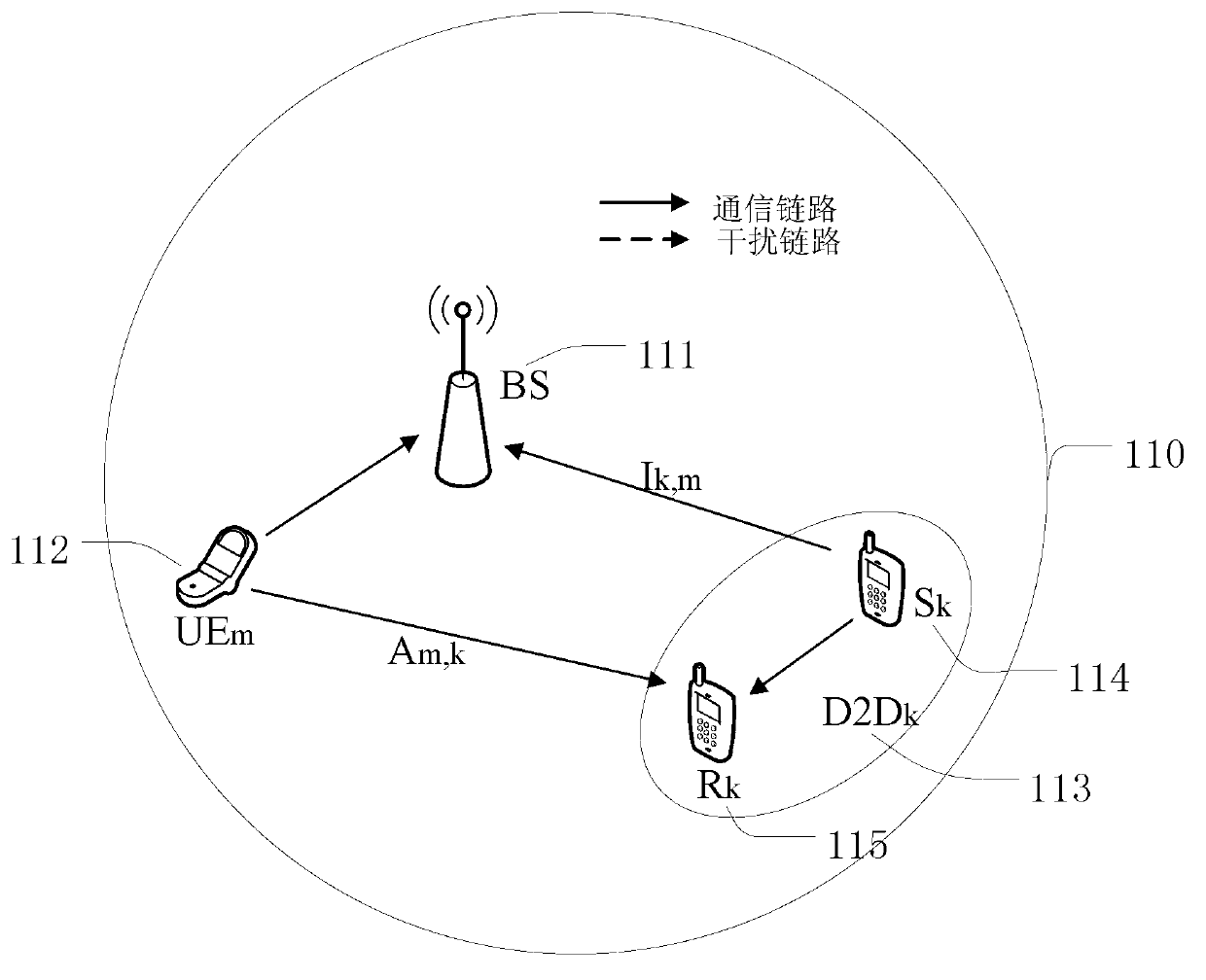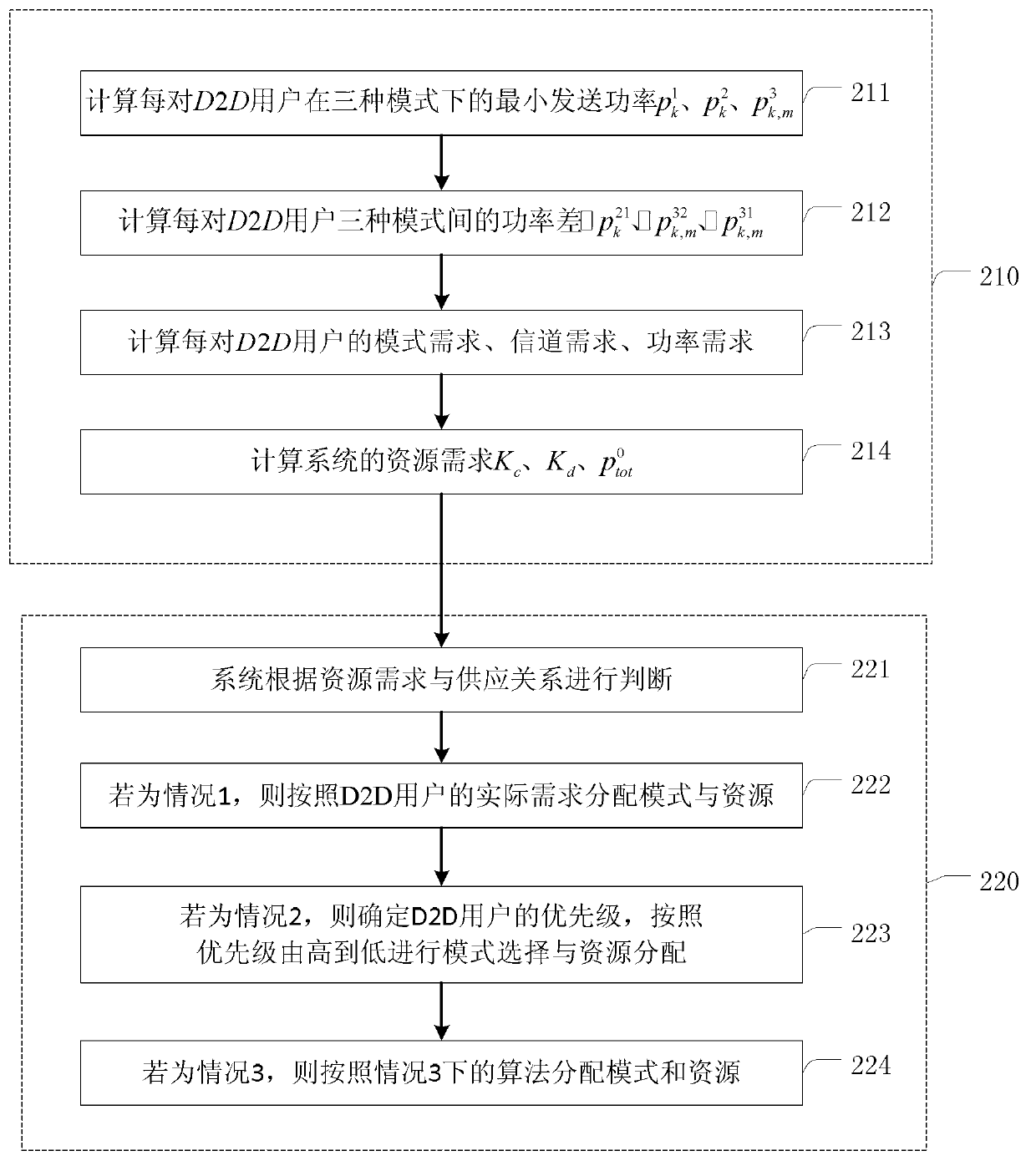Mode selection and resource allocation method of device-to-device (D2D) users in cellular system
A technology of resource allocation and cellular system, which is applied in the field of mode selection and resource allocation of direct-to-user terminals in cellular systems
- Summary
- Abstract
- Description
- Claims
- Application Information
AI Technical Summary
Problems solved by technology
Method used
Image
Examples
Embodiment Construction
[0057] The mode selection and resource allocation method of the device-to-device (D2D) user in the cellular system designed by the method of the present invention is applicable to occasions such as figure 1 shown. Specifically include:
[0058] Cell 110:
[0059] In the cell 110, there is a base station 111, and M uplink cellular users 112 (UE 1 ,UE 2 ,...,UE m ,…,UE M ), K to D2D users (D2D 1 ,D2D 2 ,...,D2D k ,...,D2D K ), each pair of D2D k 113 all include a sending terminal S k 114 and a receiving terminal R k 115. There are N in the system u Uplink idle channels, N d Downlink idle channels are available for D2D users, and these K pairs of D2D users have undergone admission control and can be accessed.
[0060] In the specific embodiment of the present invention, it is assumed that K<M, each uplink and each downlink can use at most one channel resource, and each cellular user can only be multiplexed by a pair of D2D users at most. The specific implementatio...
PUM
 Login to View More
Login to View More Abstract
Description
Claims
Application Information
 Login to View More
Login to View More - R&D
- Intellectual Property
- Life Sciences
- Materials
- Tech Scout
- Unparalleled Data Quality
- Higher Quality Content
- 60% Fewer Hallucinations
Browse by: Latest US Patents, China's latest patents, Technical Efficacy Thesaurus, Application Domain, Technology Topic, Popular Technical Reports.
© 2025 PatSnap. All rights reserved.Legal|Privacy policy|Modern Slavery Act Transparency Statement|Sitemap|About US| Contact US: help@patsnap.com



